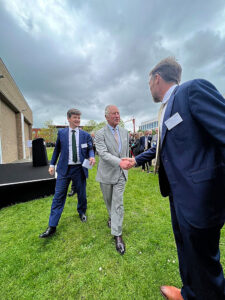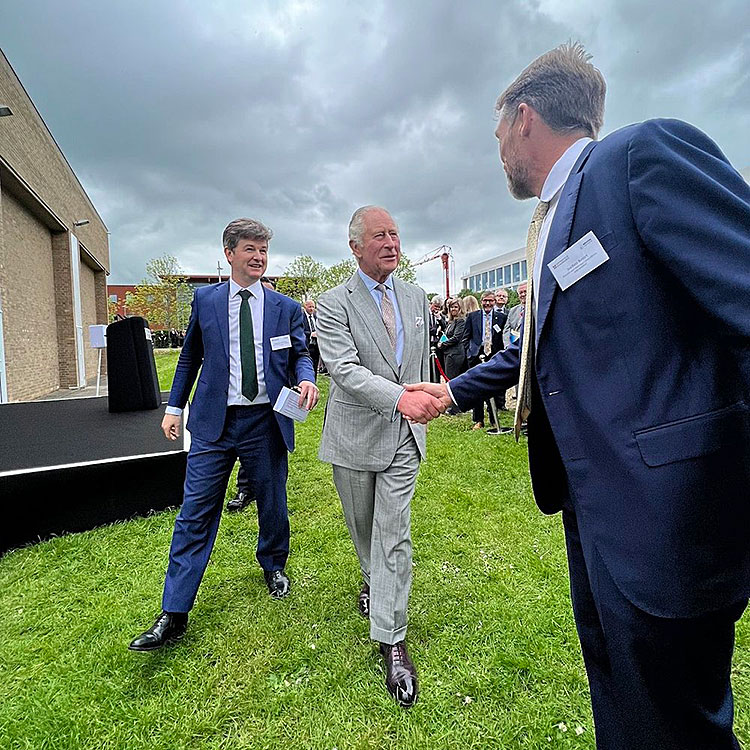In May, the Federal Aviation Administration released an updated blueprint for airspace and procedure changes to accommodate future air taxis such as the ones being developed in Santa Cruz by Stanford grad JoeBen Bevirt.
The FAA categorizes these electric aircraft as “Advanced Air Mobility.”

JoeBen Bevirt, founder of the Joby Aviation air taxi company, meets King Charles III at the opening of the Whittle Laboratory in Cambridge, UK, which aims to improve aero-thermal performance of turbomachines.
The FAA says these aircraft have the potential to create transportation that is more efficient, more sustainable, and more equitable, while creating thousands of great jobs.
These aircraft could be used to transport cargo and passengers, help with firefighting, provide search and rescue operations and connect underserved and rural communities.
These aviation dreams will only happen if people are confident it is safe, just like flying in the United States today, the FAA says.
That’s the FAA’s job: Making sure this new generation of air taxis maintains the high level of safety that defines modern aviation. Many companies in this new field are the designer, manufacturer, and operator, requiring them to obtain several certifications.
The FAA began developing standards nine months ago.
The FAA says, “We are making steady progress certifying aircraft and pilots, planning for integration of these aircraft into the airspace, and collaborating internationally. Here are some key milestones.
The vision is for air taxis to use existing routes and helicopter landing pads.
As operations increase, air taxis are expected to fly in corridors between major airports and “vertiports” in major cities.



